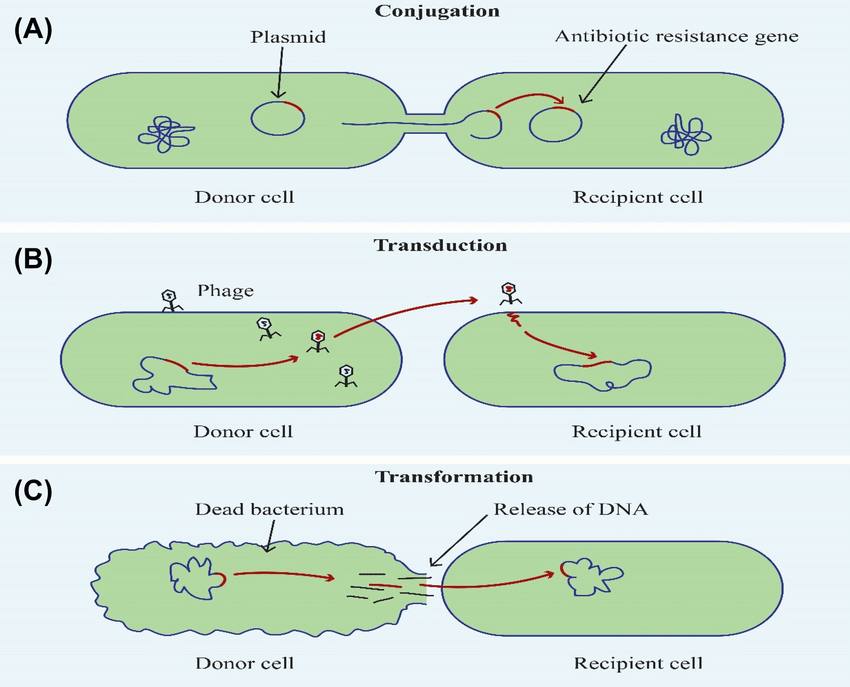Unit 6: Gene Expression and Regulation
1/37
Earn XP
Description and Tags
Name | Mastery | Learn | Test | Matching | Spaced |
|---|
No study sessions yet.
38 Terms
Molecular Structure of DNA
Ex.
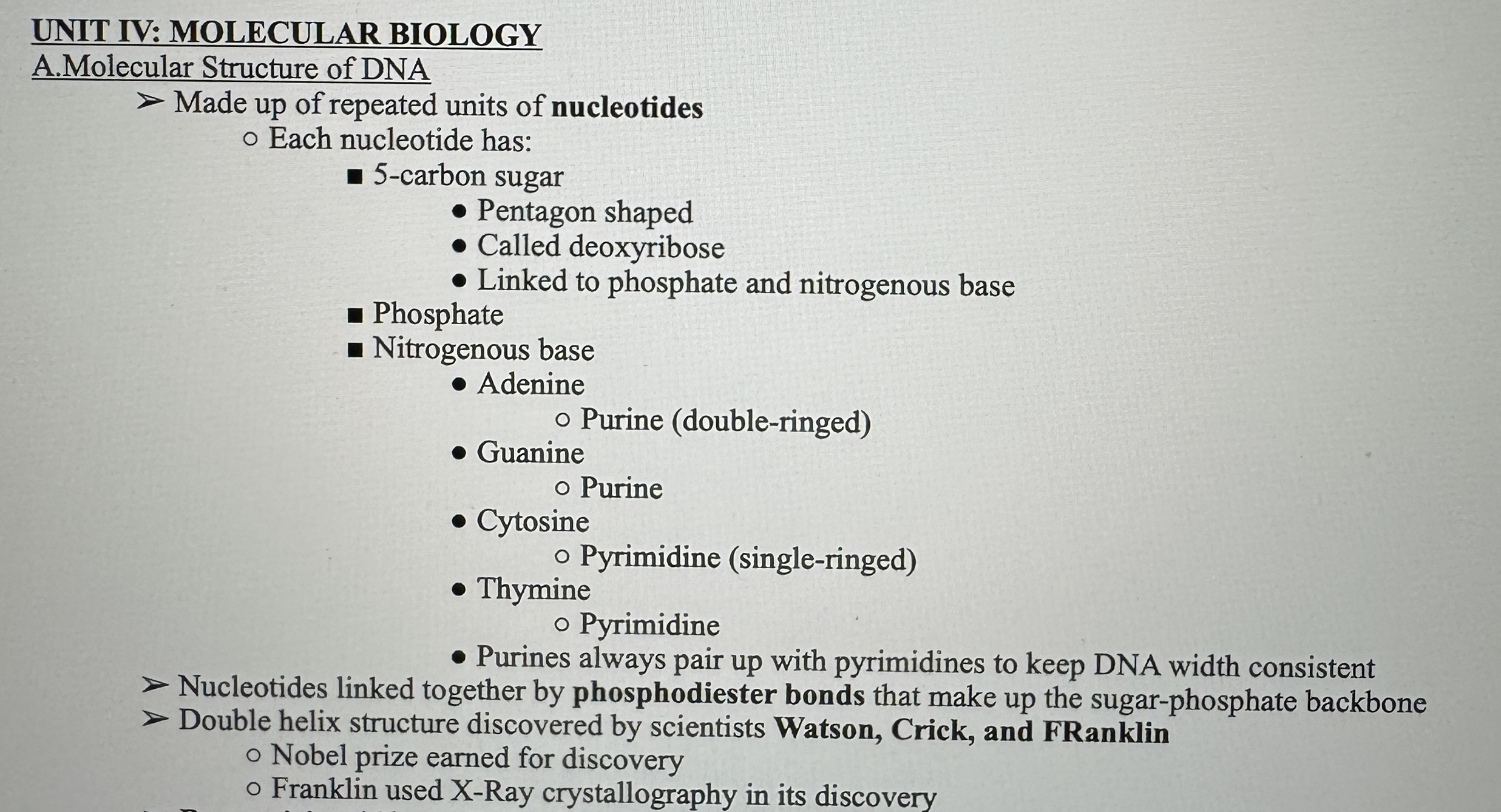
Base Pairing
Ex.

Genome Structure
Ex.
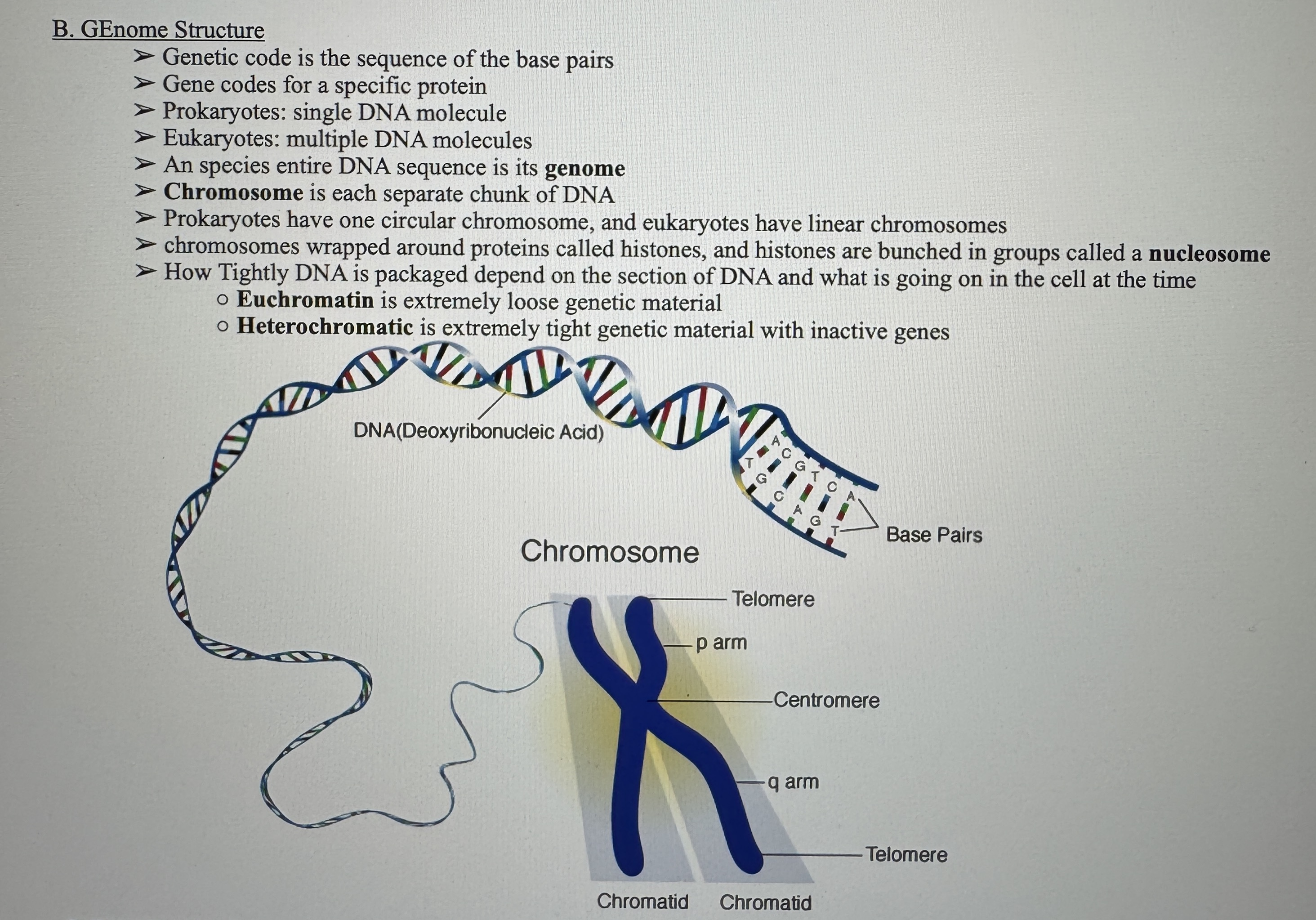
DNA Replication
Ex.
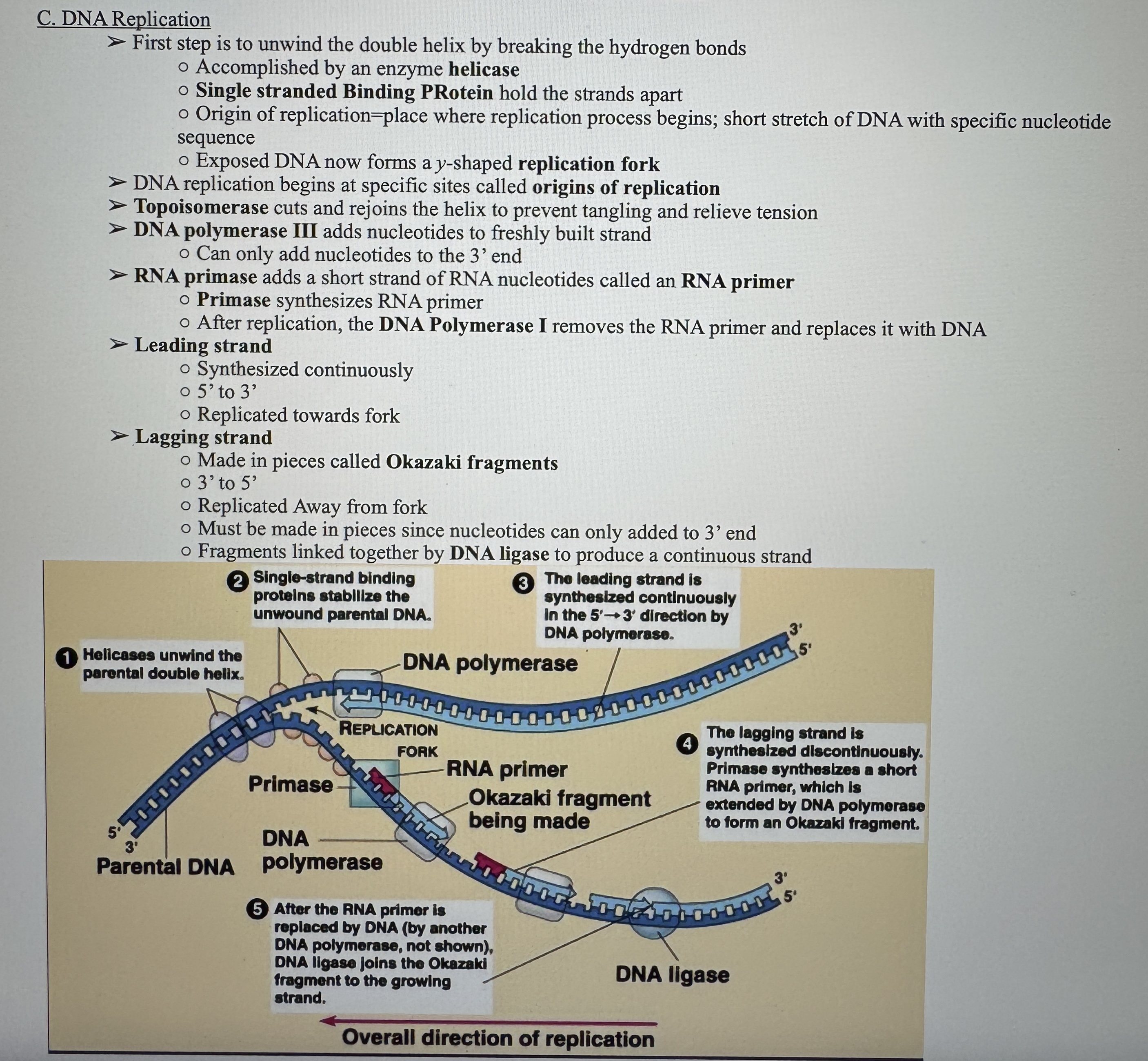
DNA Proofreading and Repair
Ex.
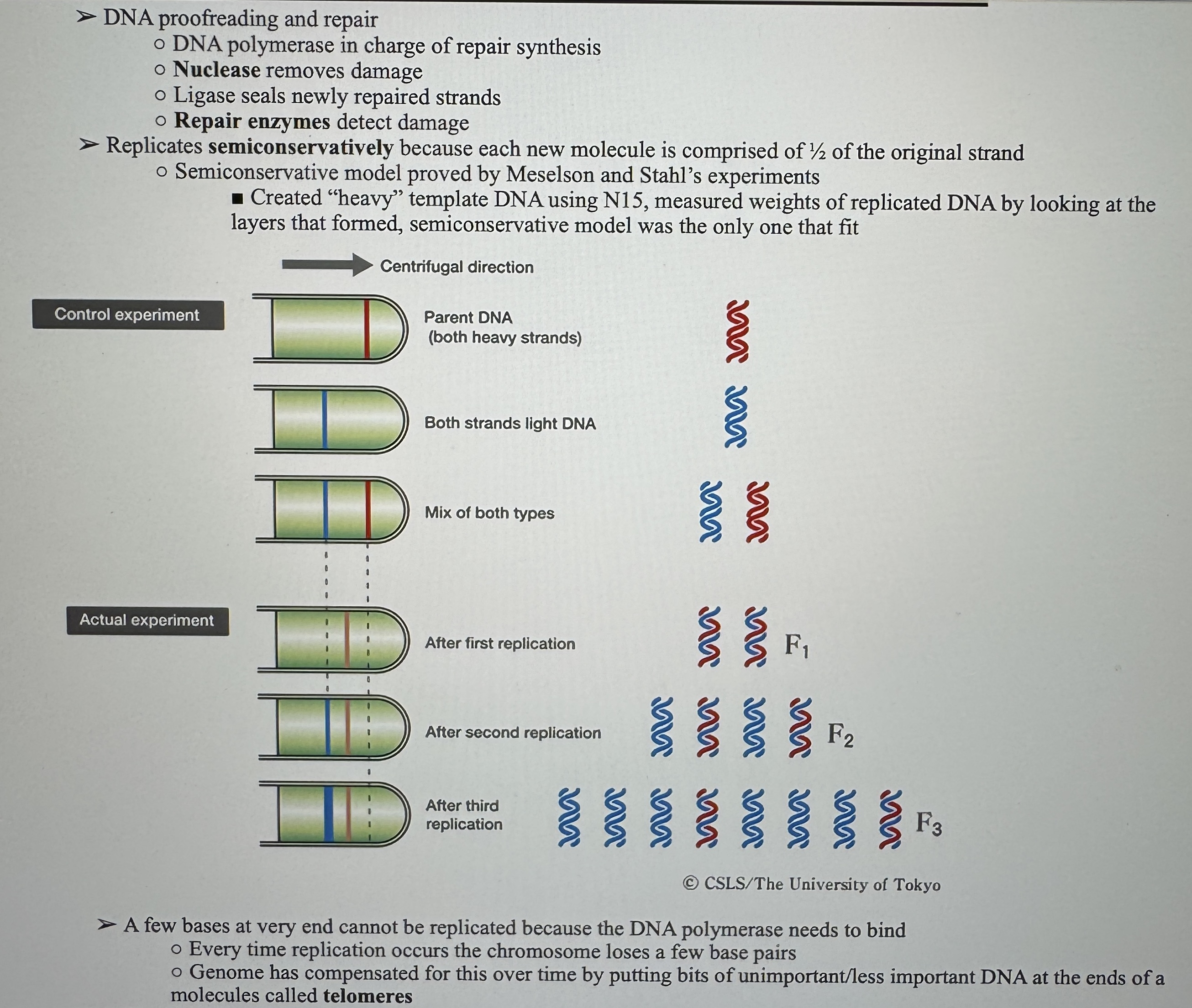
Key History
Ex.
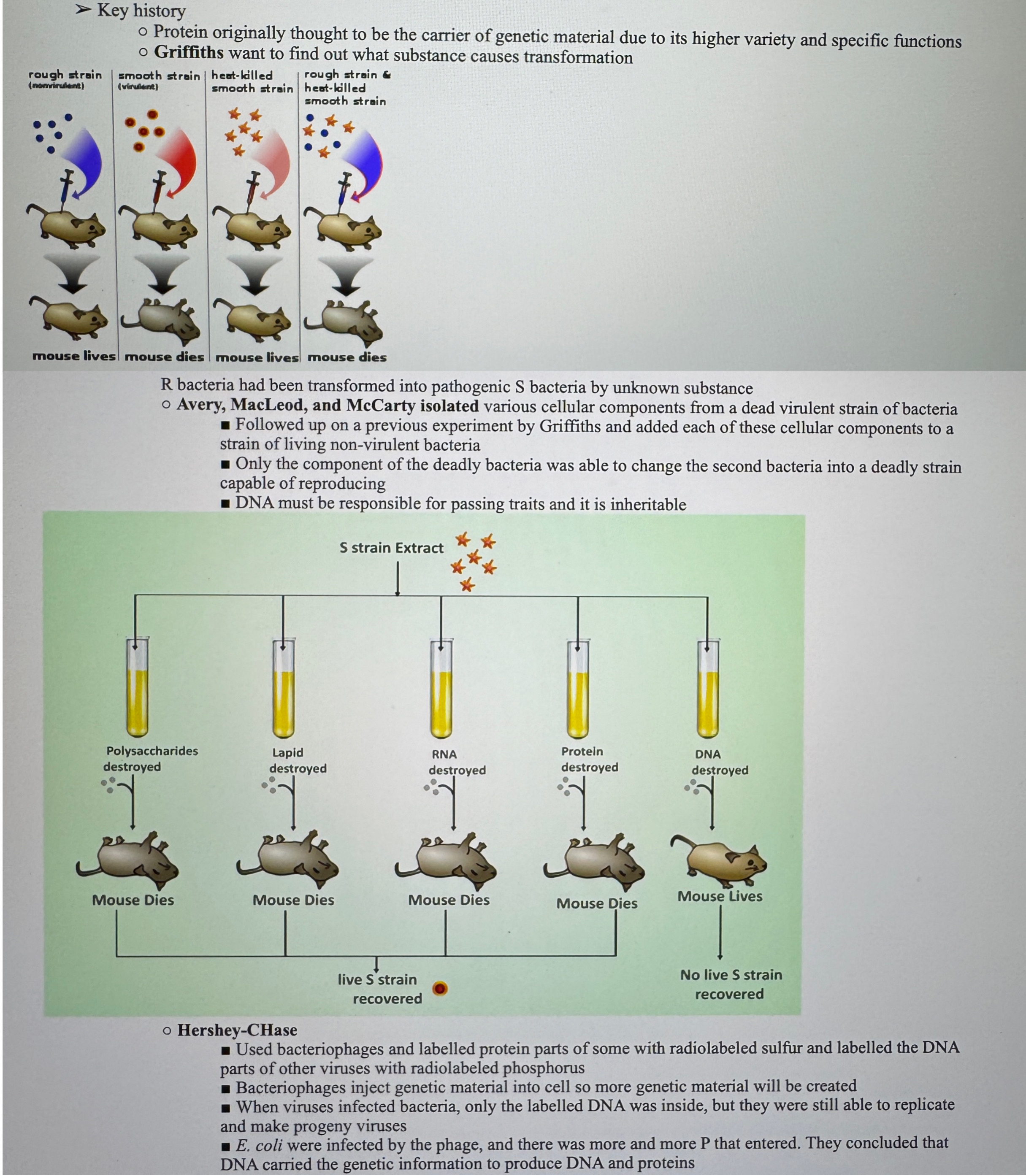
Central Dogma
Ex.
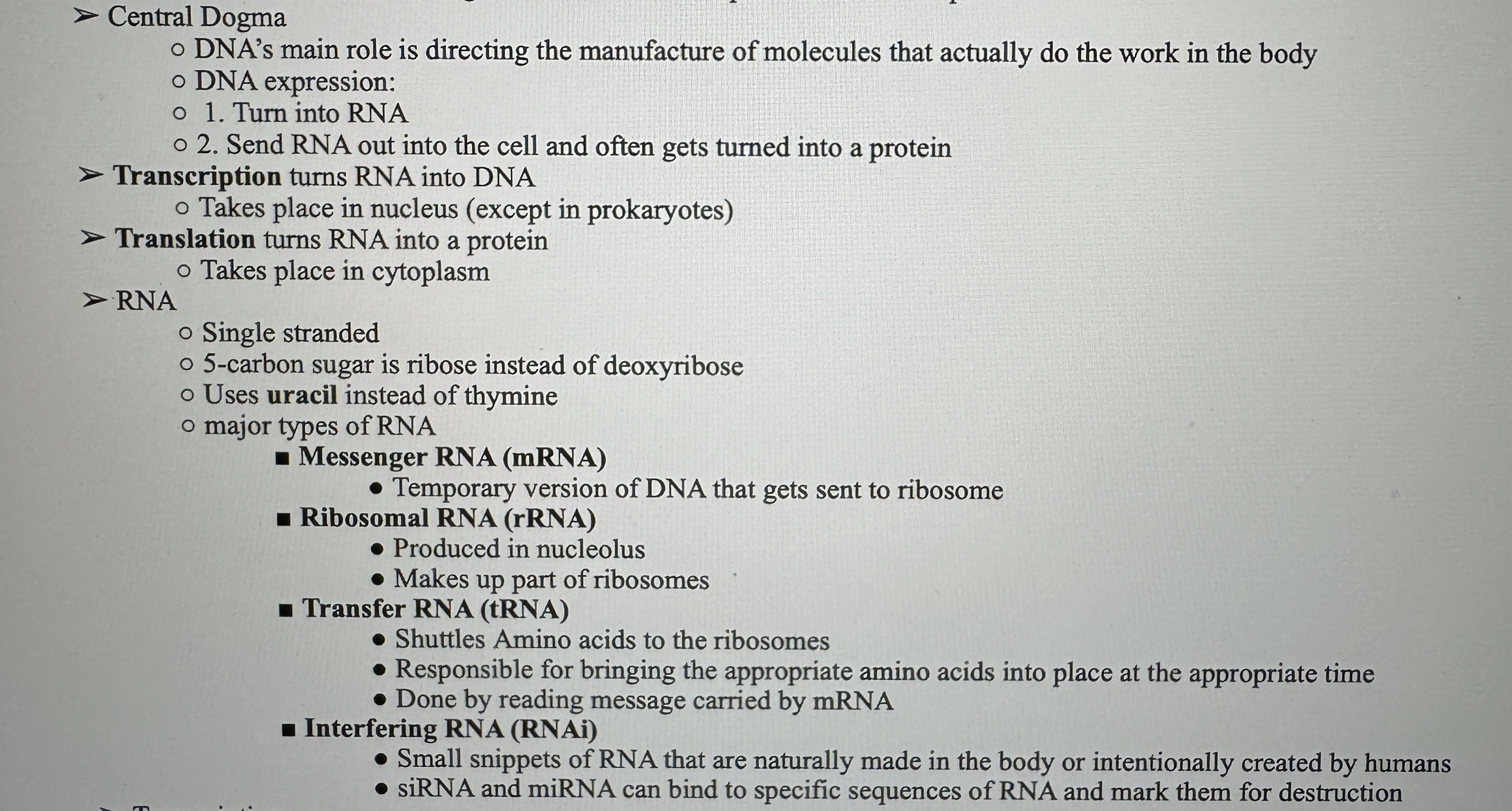
Transcription
Ex.
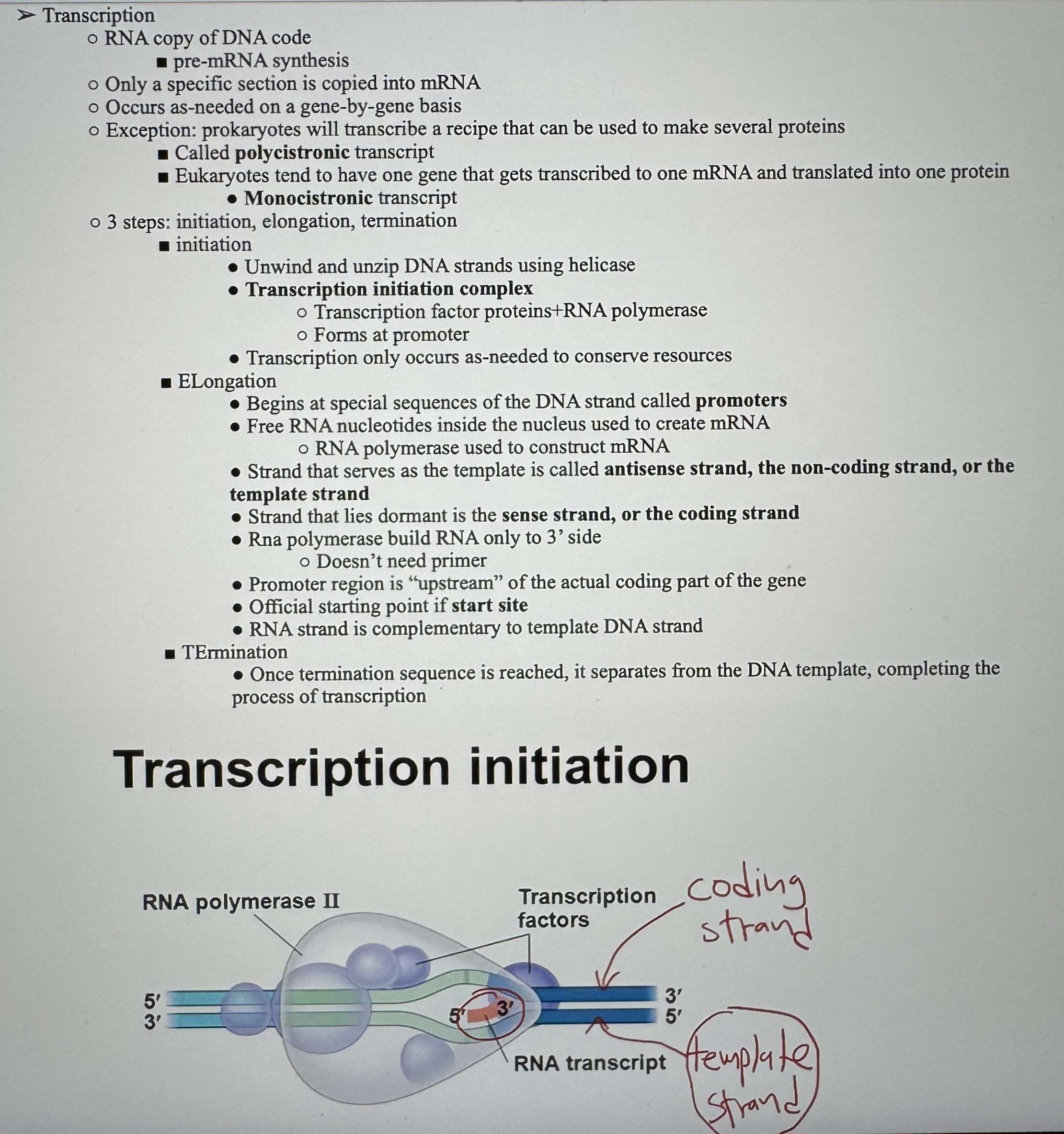
RNA Processing Pt1
Ex.
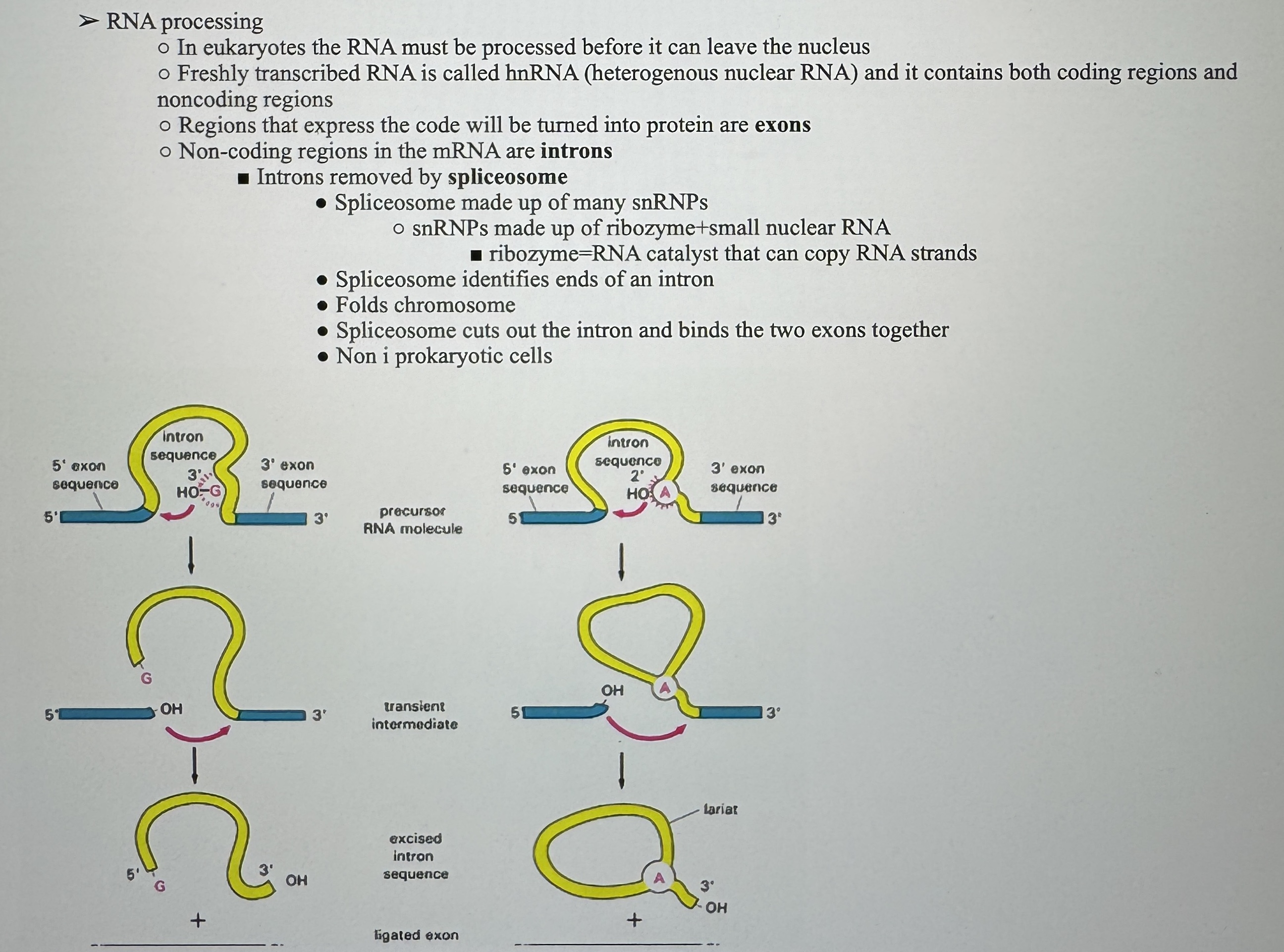
RNA Processing Pt2
Ex.
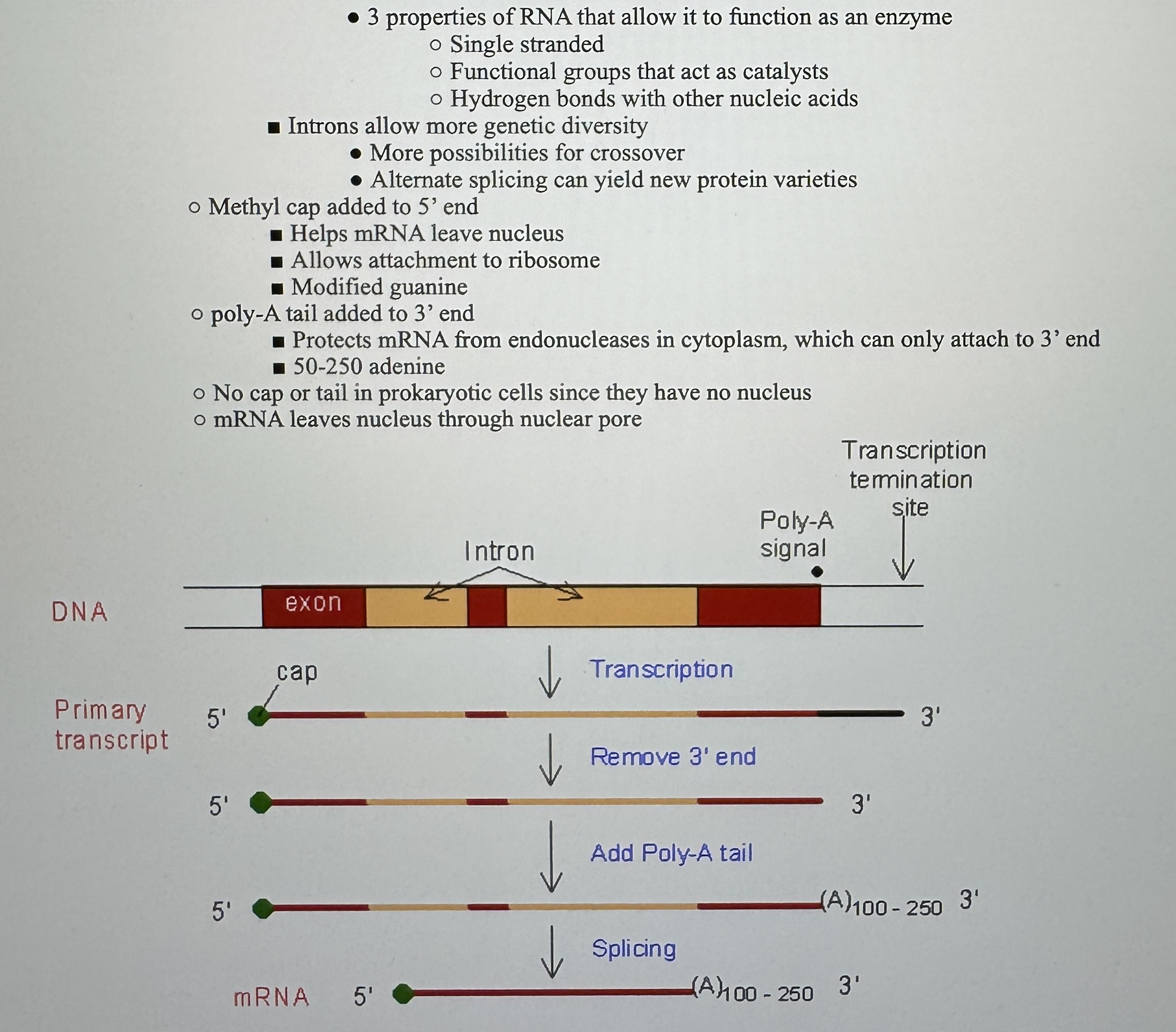
Translation
Ex.
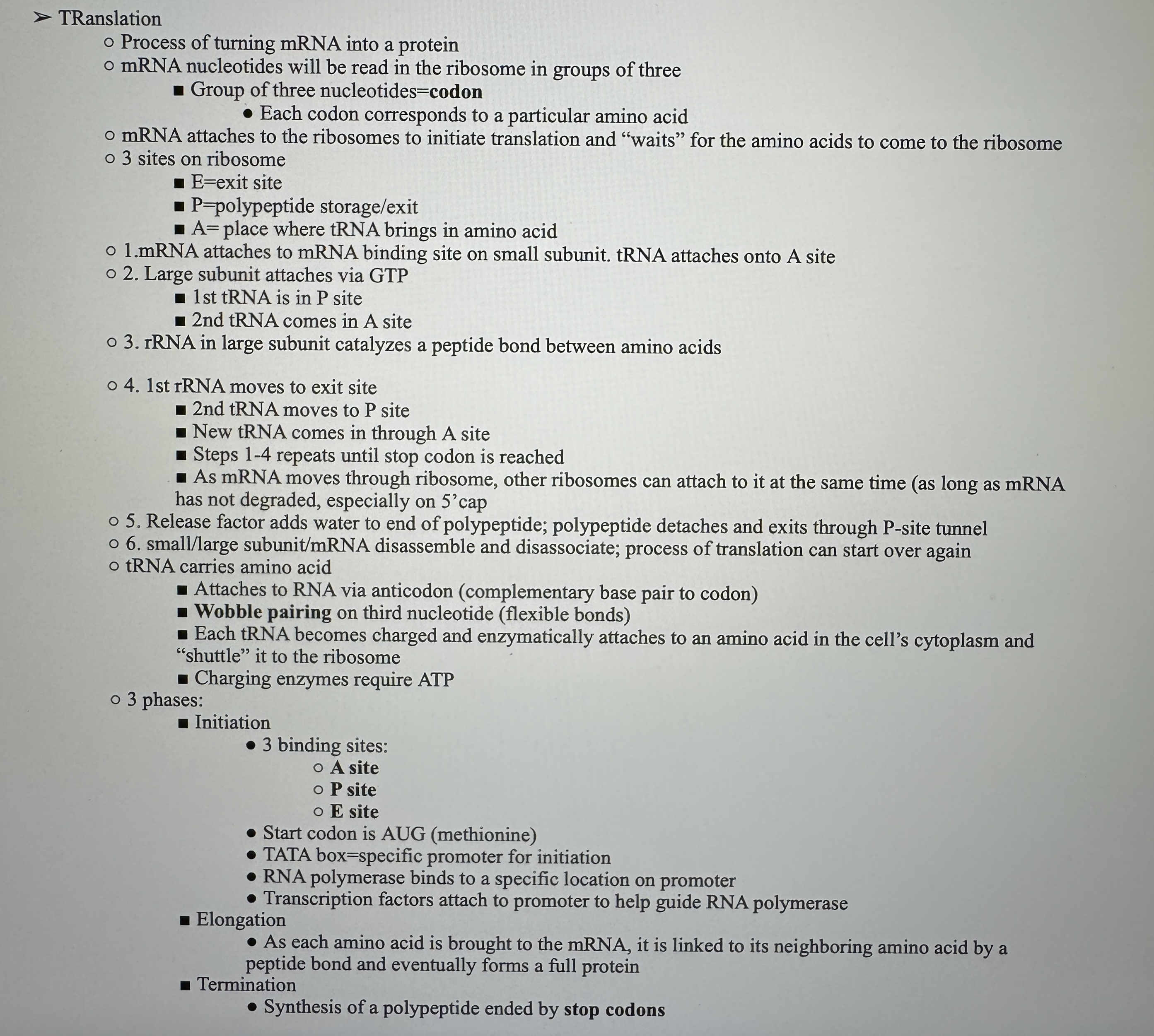
Translation Photo
Ex.
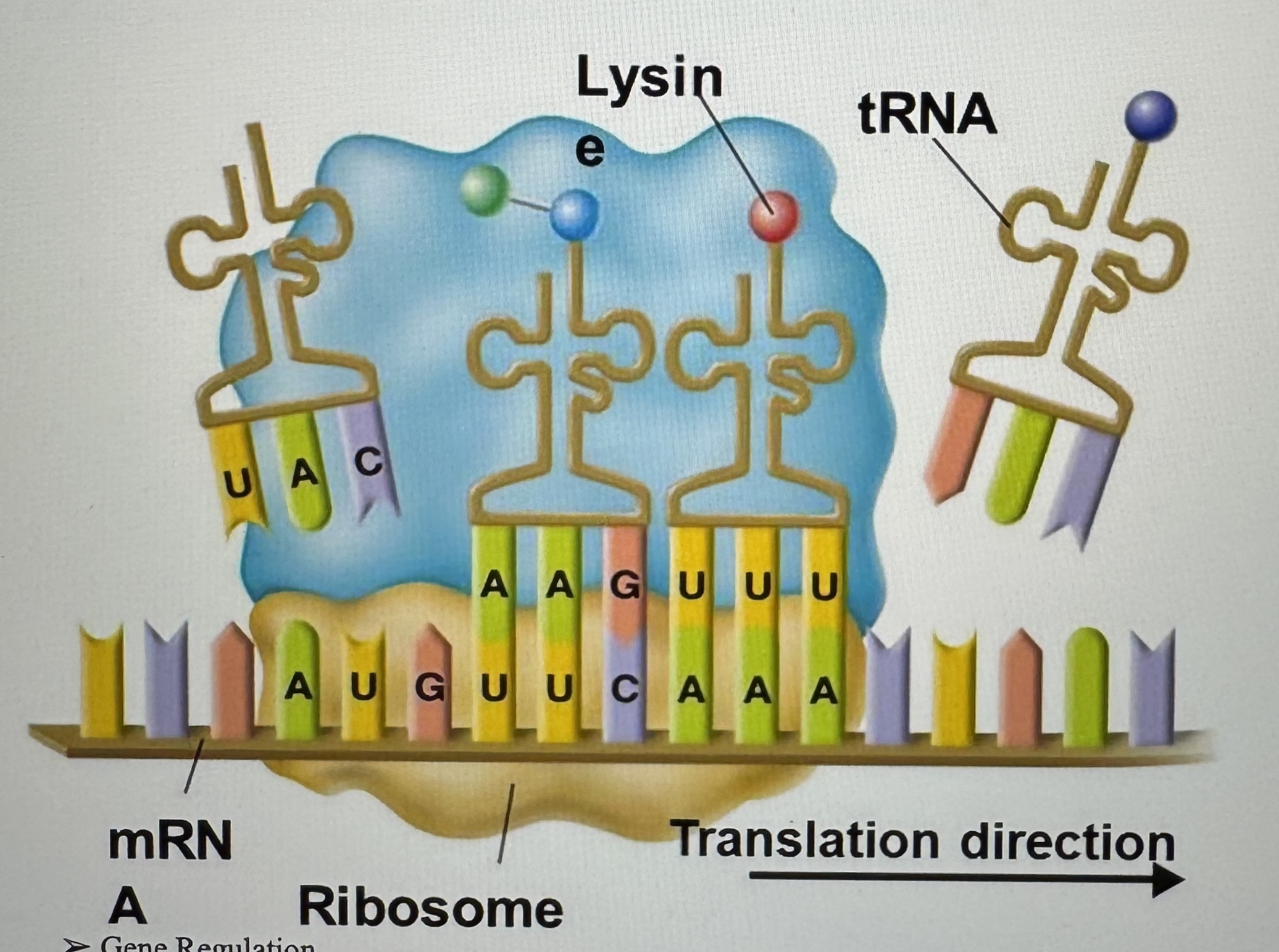
Gene Regulation and Operons
Ex.
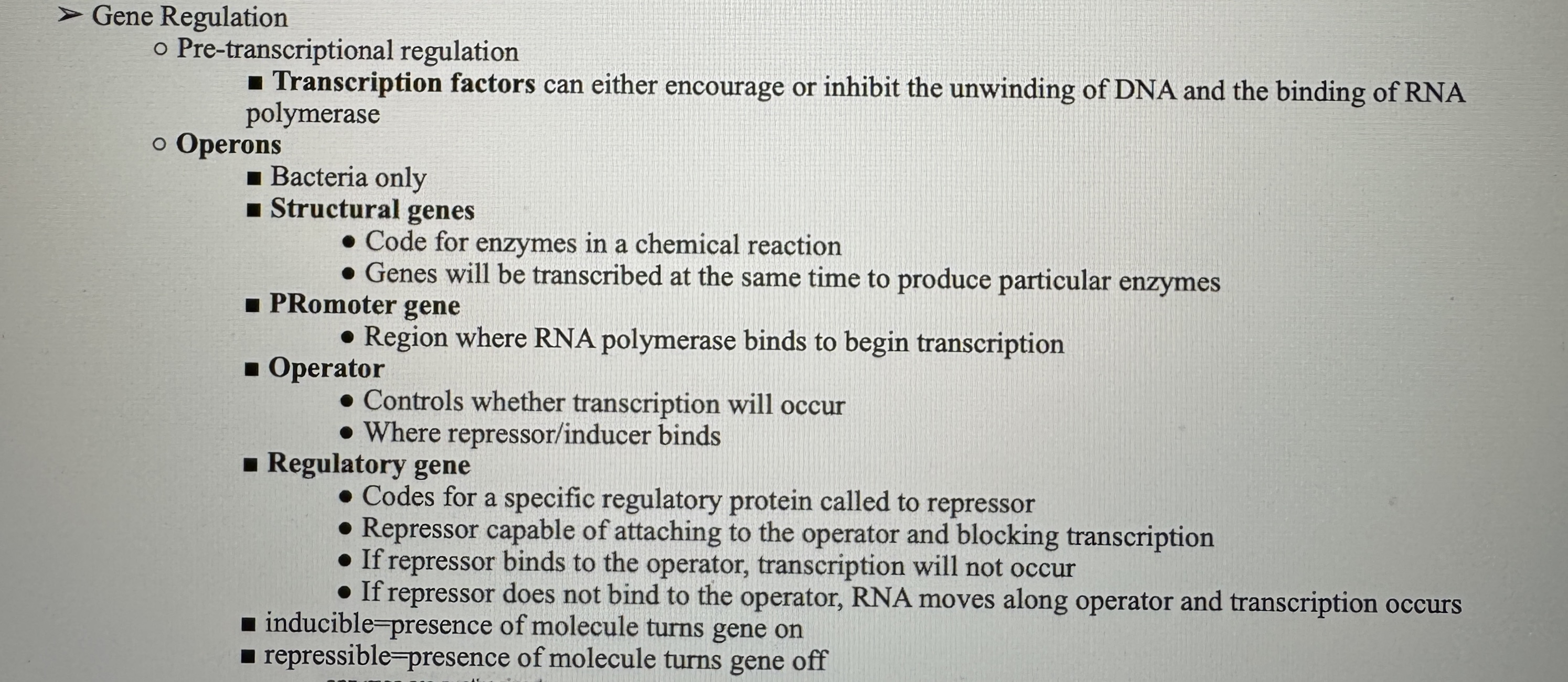
Operon Examples
Ex.

Chromatin Modification and Enhancers
Ex.
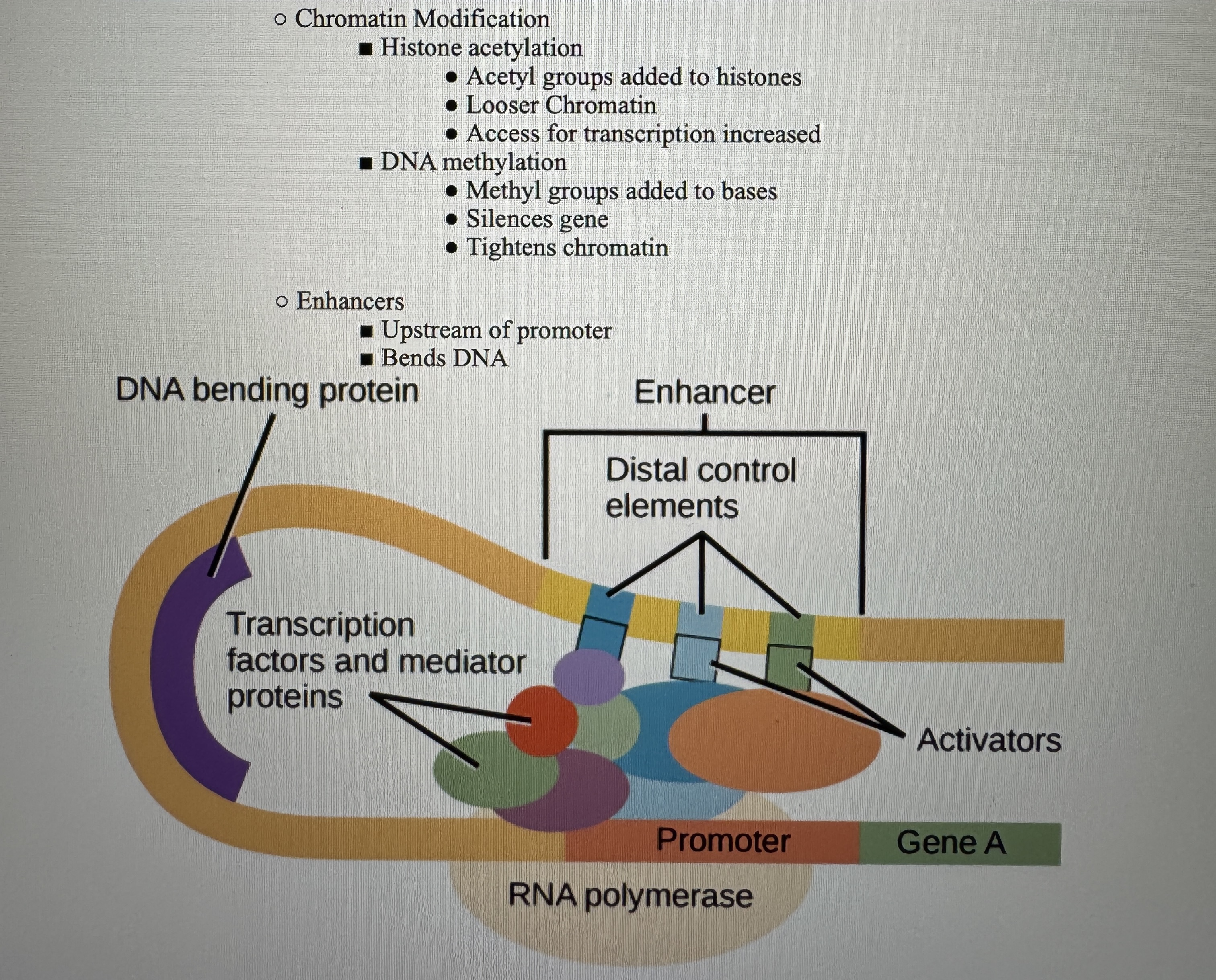
Post-Translational and Transcriptional Regulation
Ex.

Mutations
Ex.
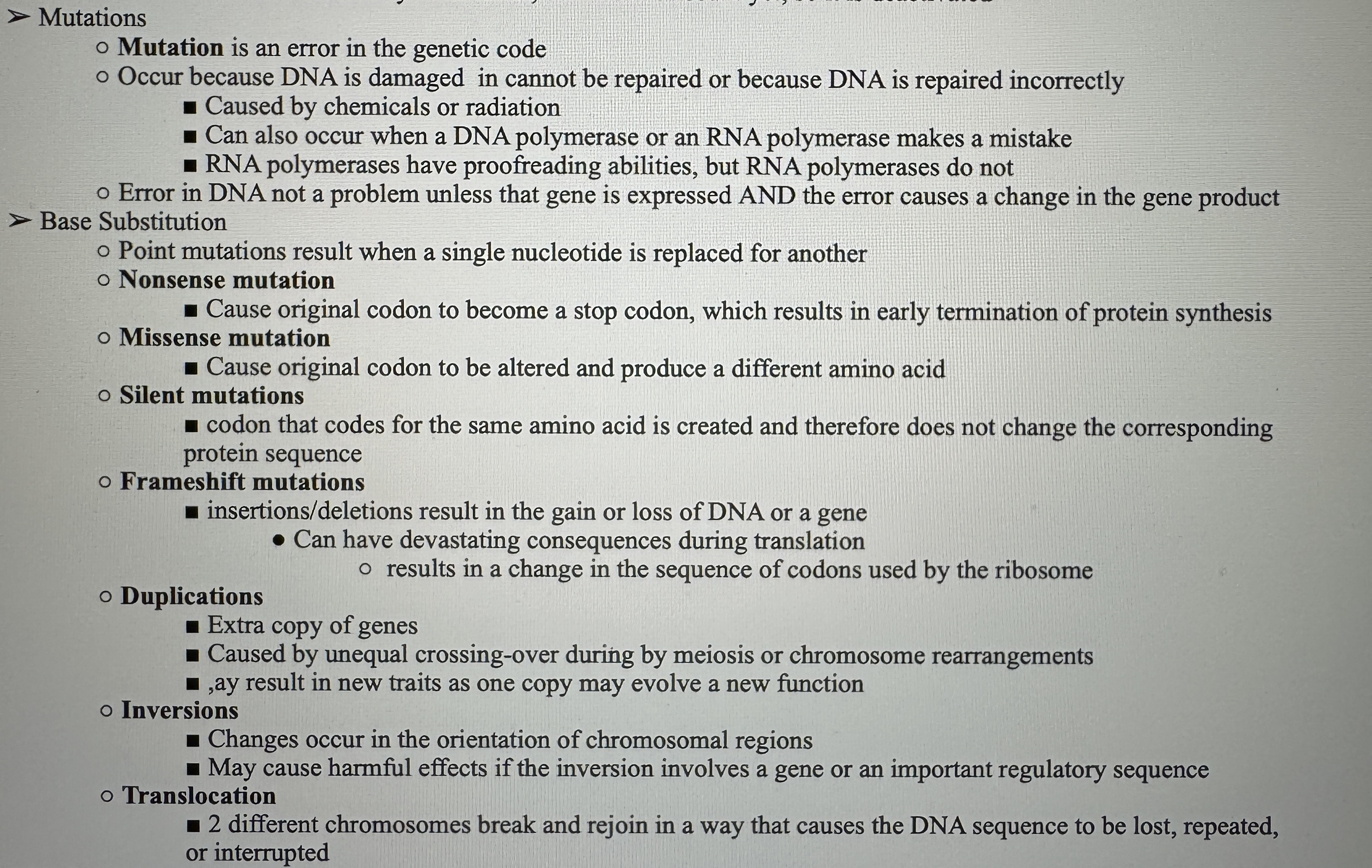
Biotechnology
Ex.

Transformation
Ex.
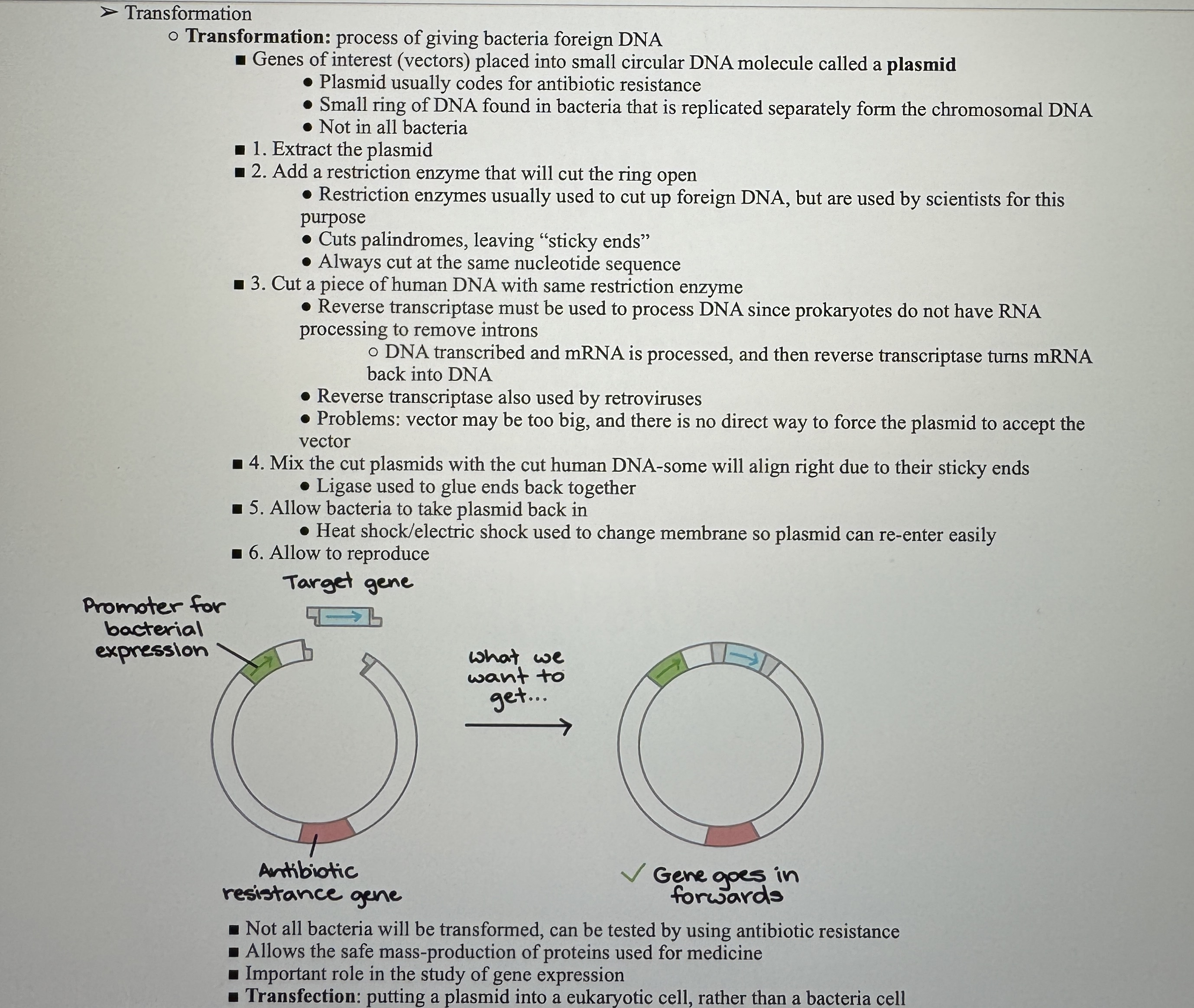
Gel Electrophoresis
Ex.
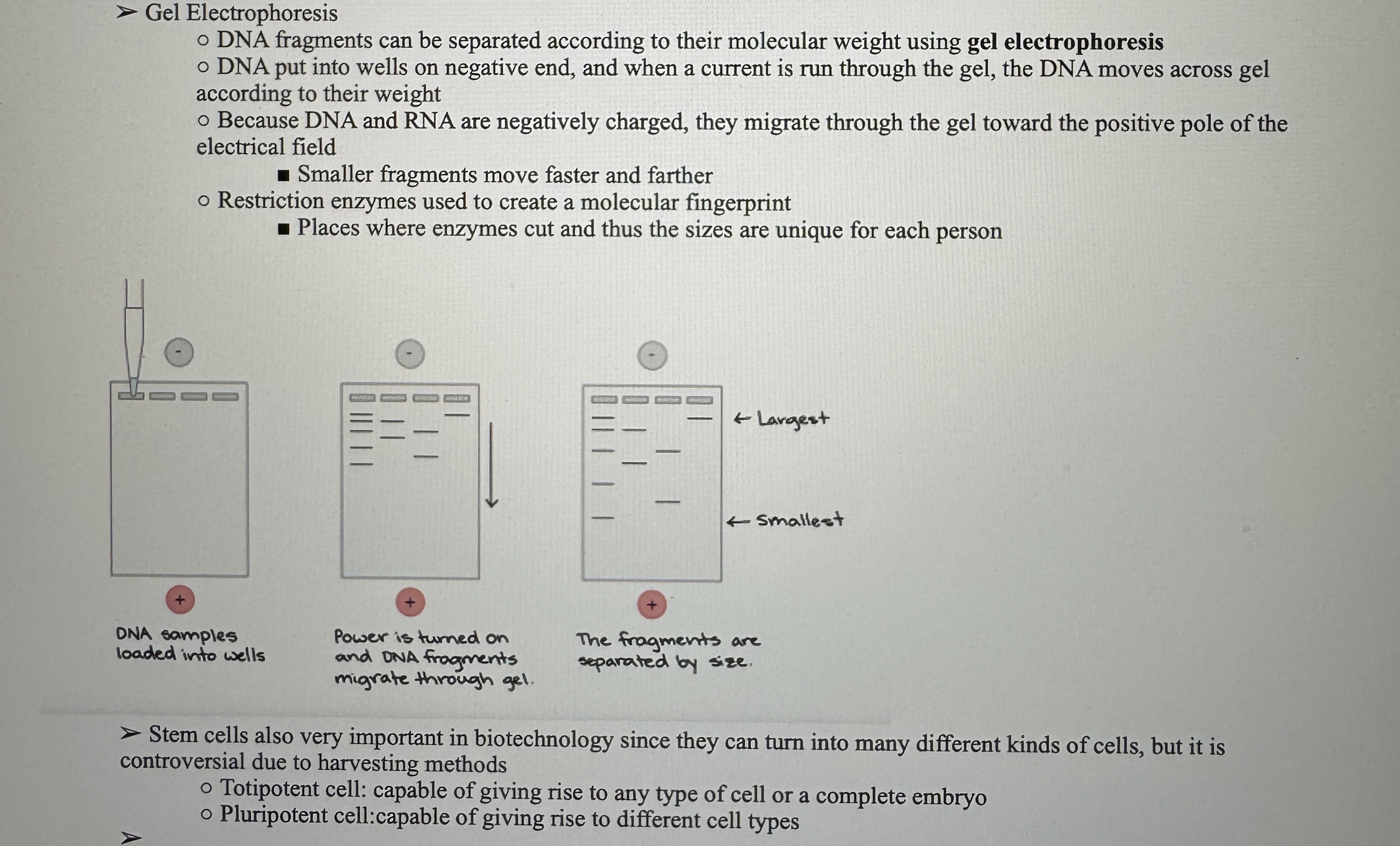
Extra - Eukaryotic vs Prokaryotic DNA
Ex.
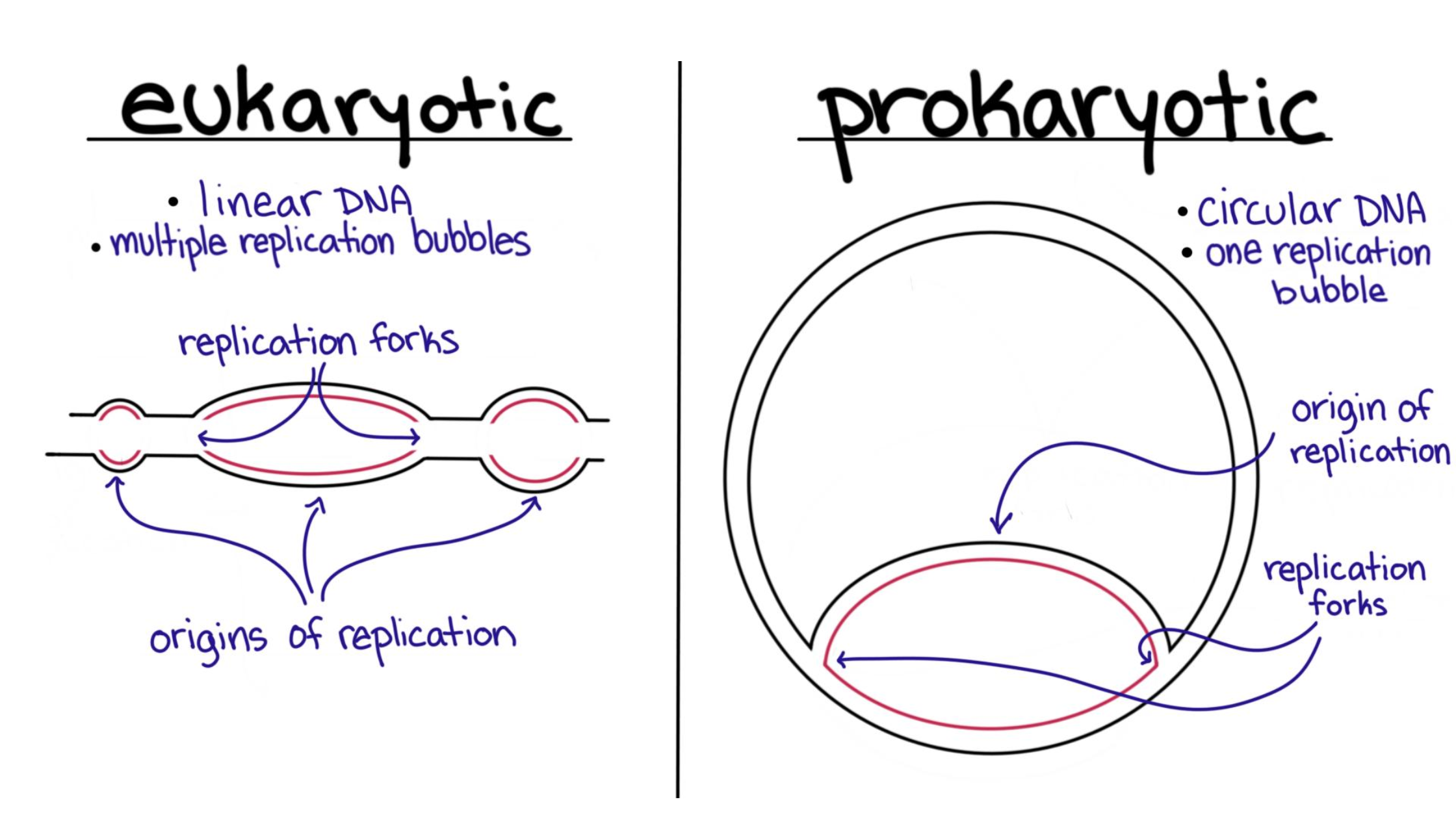
Extra - Plasmids
Plasmids are small, circular DNA structures found in some bacteria, archaea, plants, and fungi. They are separate from the cell's chromosomal DNA and replicate independently. Plasmids often carry genes that give the host organism beneficial traits, like antibiotic resistance.

Extra - Why is DNA better hereditary material than RNA?
DNA is considered a better genetic material than RNA primarily due to its greater stability, enabling long-term storage of genetic information, and its double-stranded structure, which facilitates efficient replication and repair.
Extra - Purines and Pyrimidines
Ex.
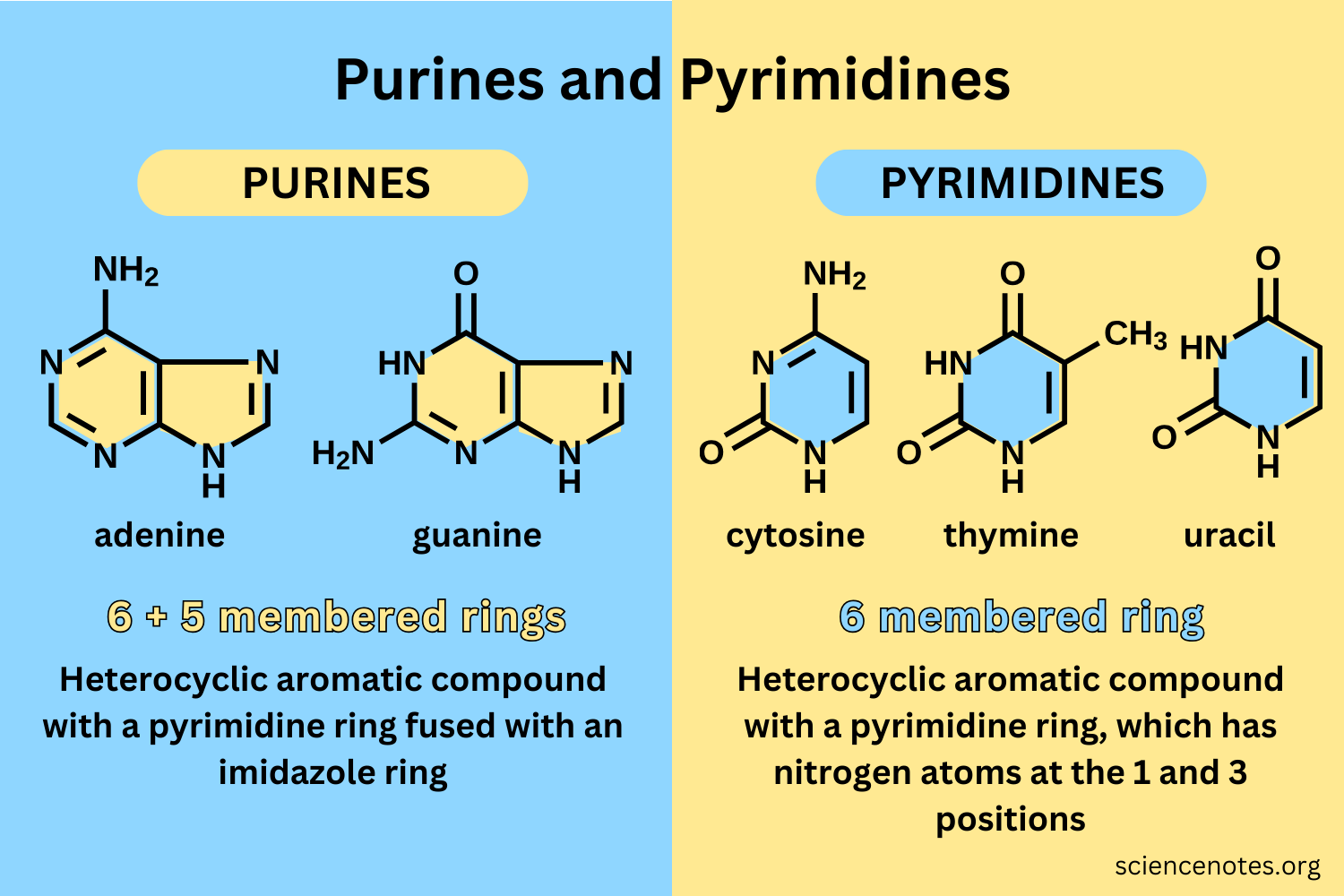
Extra - DNA Replication
Ex.

Extra - Function of rRNA
Ribosomal RNA (rRNA) is a non-coding RNA that forms the structural framework of ribosomes, the cellular organelles that translate messenger RNA (mRNA) into proteins.
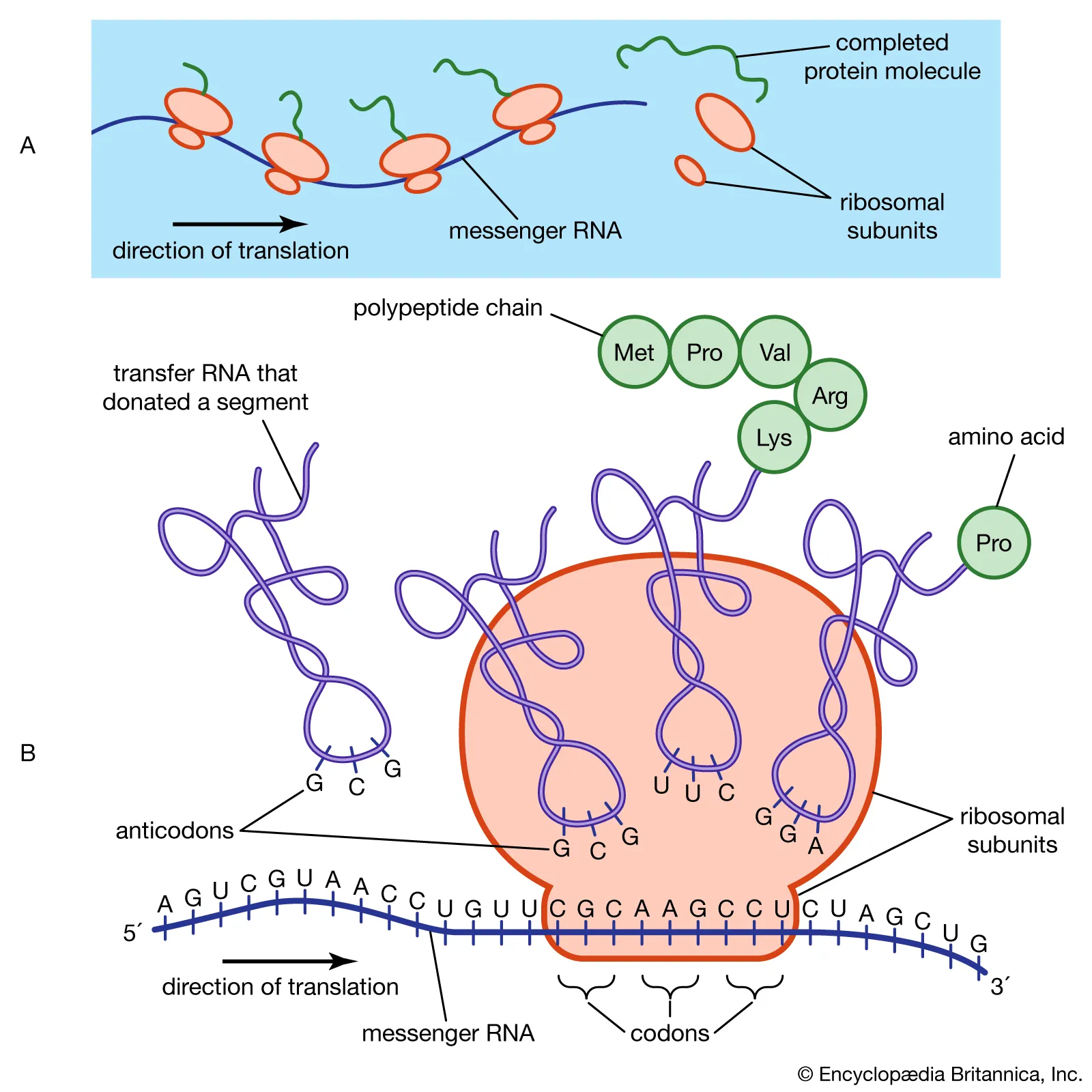
Extra - Alternative Splicing in Action
Ex.
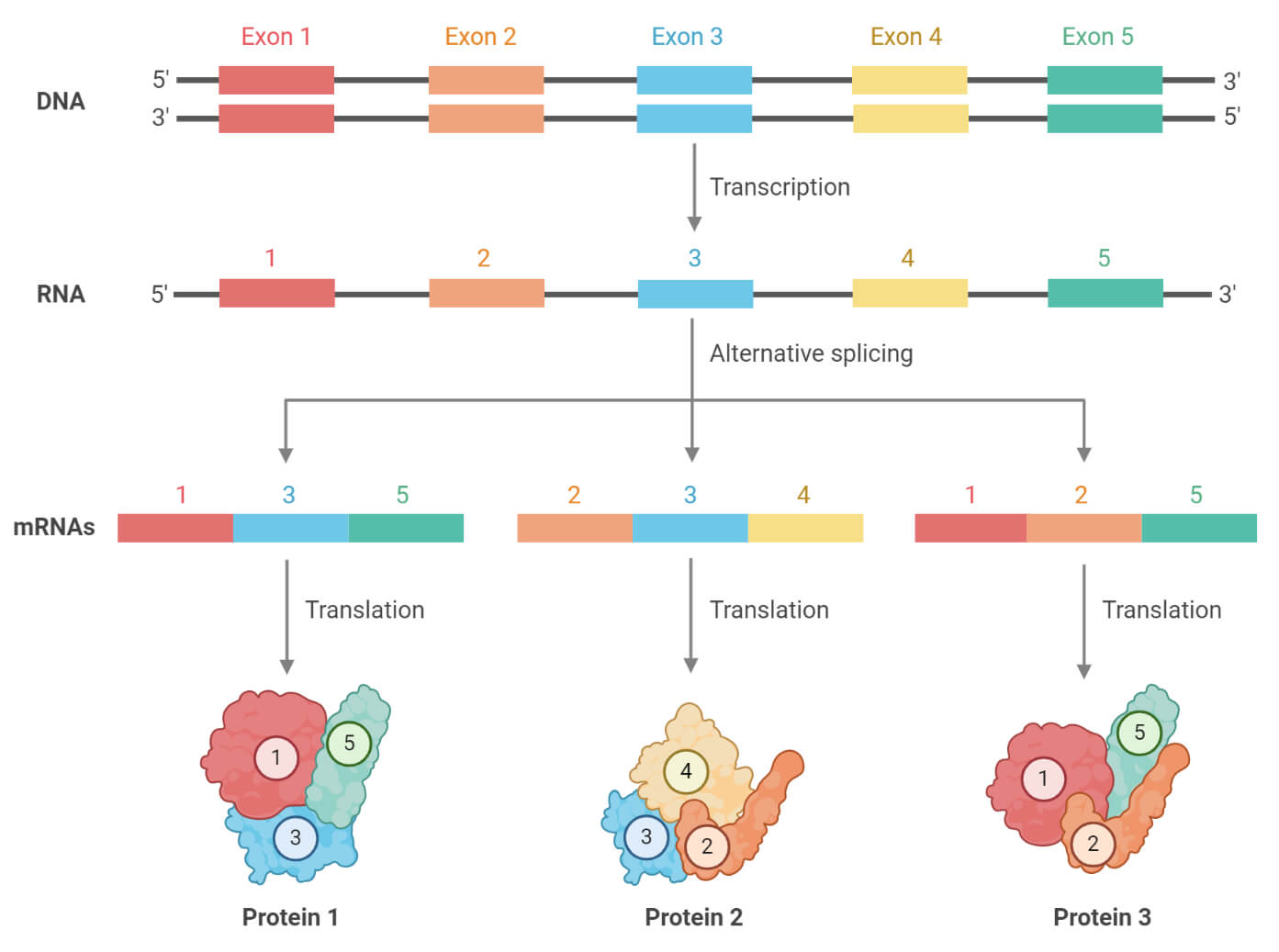
Extra - Translation Steps
Ex.
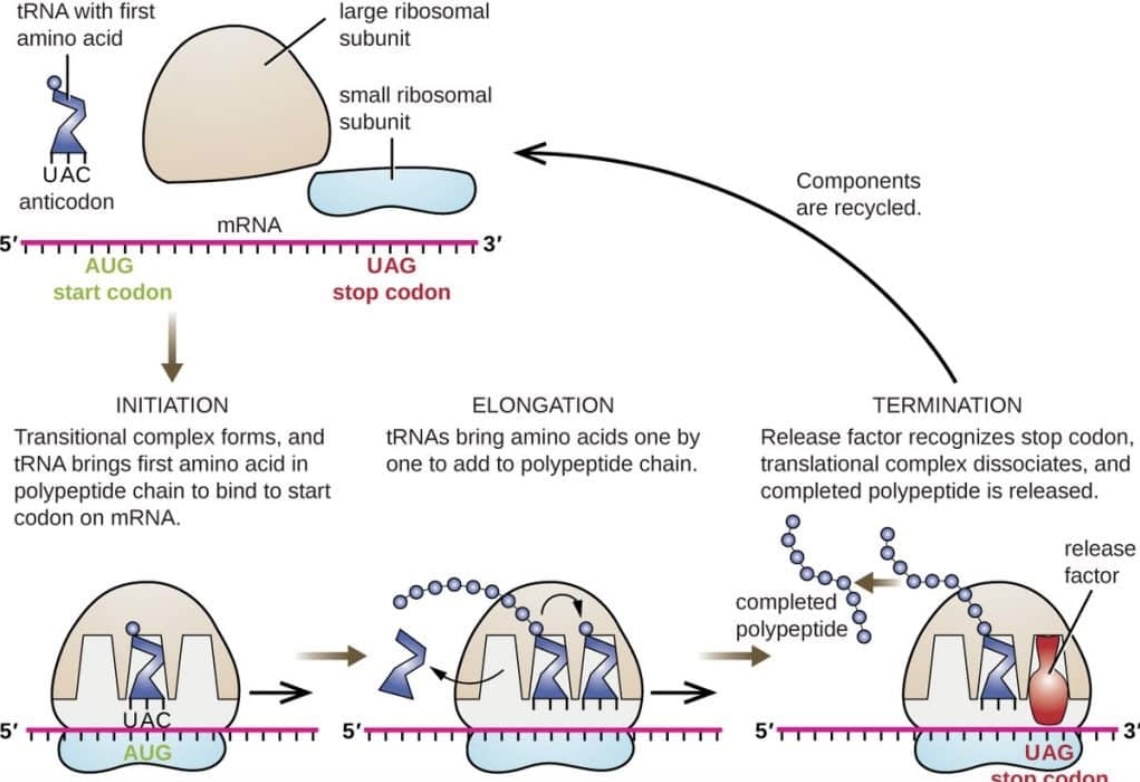
Extra - How to retroviruses violate the central dogma?
Retroviruses violate the central dogma of molecular biology by using reverse transcriptase to create DNA from their RNA genome, a process that reverses the typical flow of genetic information (DNA to RNA to protein).
Extra - An overview on viruses
The Central Dogma and Retroviruses
• The central dogma describes the flow of genetic information: DNA → RNA → Protein.
• Retroviruses violate this because they use RNA as their genetic material and use reverse transcriptase to convert RNA back into DNA, which integrates into the host genome.
• Examples of retroviruses include HIV (Human Immunodeficiency Virus) and HTLV (Human T-lymphotropic Virus).
Reverse Transcriptase
• This is an enzyme used by retroviruses to transcribe RNA into DNA, allowing viral genetic material to integrate into the host’s genome.
•Viral Genome Integration
• Some viruses, particularly retroviruses, insert their genetic material into the host cell’s DNA.
• This allows the virus to remain dormant and replicate along with the host cell before producing new viruses.
Viral Progeny Formation
• Viruses replicate by hijacking the host cell’s machinery to synthesize viral proteins and RNA/DNA, assembling new virus particles, and releasing them (sometimes through cell lysis or budding).
Extra - Types of Eukaryotic Gene Regulation
Transcriptional level:
Transcription factors: Proteins that bind to specific DNA sequences (promoters and enhancers) to either activate or repress transcription.
Enhancers: DNA regions that can be located far from the gene they regulate, enhancing transcription when bound by transcription factors.
Promoter region: DNA sequence near the transcription start site where RNA polymerase binds to initiate transcription.
Epigenetic level:
DNA methylation: Chemical modification of DNA that can silence gene expression
Histone modifications: Chemical modifications of histone proteins that affect chromatin structure, impacting accessibility of DNA to transcription factors
Post-transcriptional level:
RNA splicing: Process where different mRNA transcripts can be produced from a single gene by selectively splicing exons
mRNA stability: Regulation of how long an mRNA molecule lasts before being degraded, affecting protein production
Translational level:
Translation factors: Proteins that control the initiation of translation
Post-translational level:
Protein modifications: Chemical modifications like phosphorylation or ubiquitination that can alter protein function
Extra - Lac and Trp Operon Diffrences
Ex.
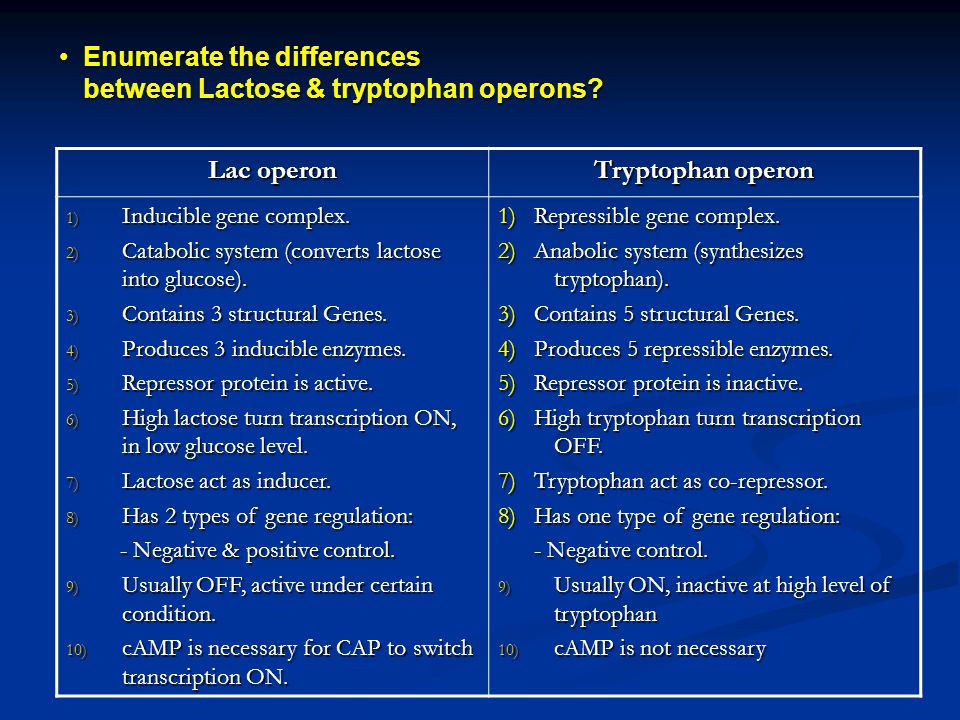
Extra - What is Differential Gene Expression
Differential gene expression (DGE) refers to the process where different genes are activated or deactivated within a cell, leading to the cell's specialized function and the diversity of cell types in an organism.
Extra - siRNA and miRNA
Ex.
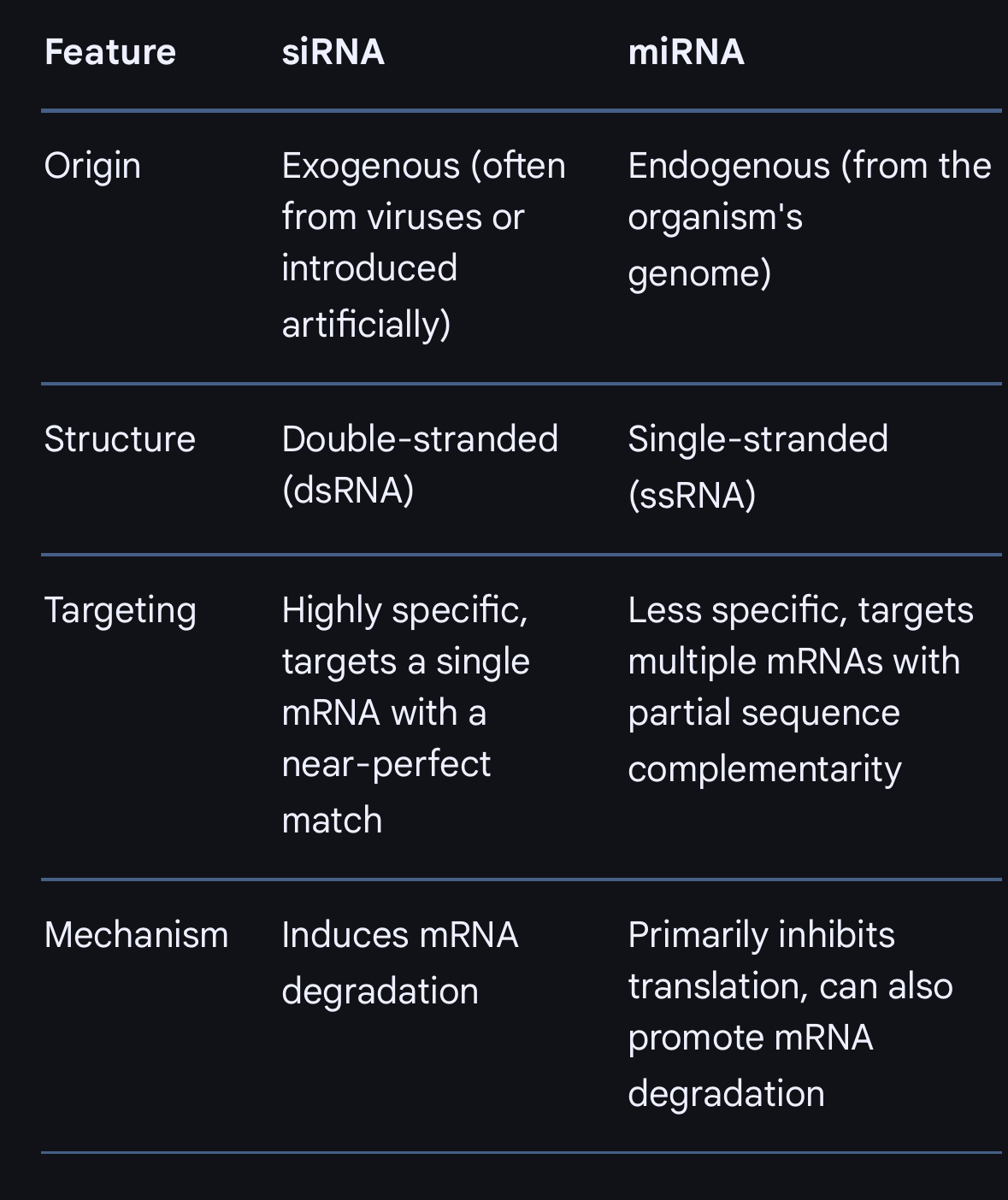
Extra - Types of Mutations in DNA
Ex.
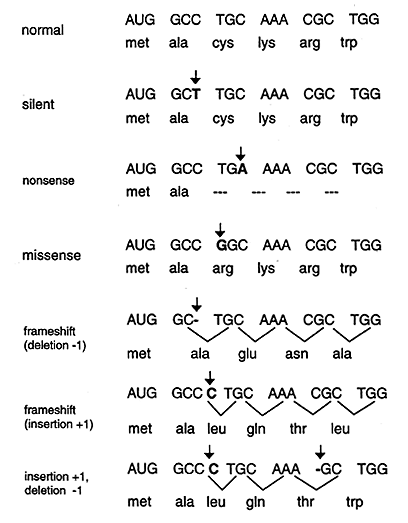
Extra - What is PCR?
PCR stands for polymerase chain reaction, a laboratory technique that amplifies specific DNA segments. It's a molecular biology technique that can produce billions of copies of a DNA segment.

Extra - What is DNA sequencing?
DNA sequencing is a process that determines the order of nucleotides (A, T, C, and G) in a DNA molecule, revealing the genetic information encoded within.
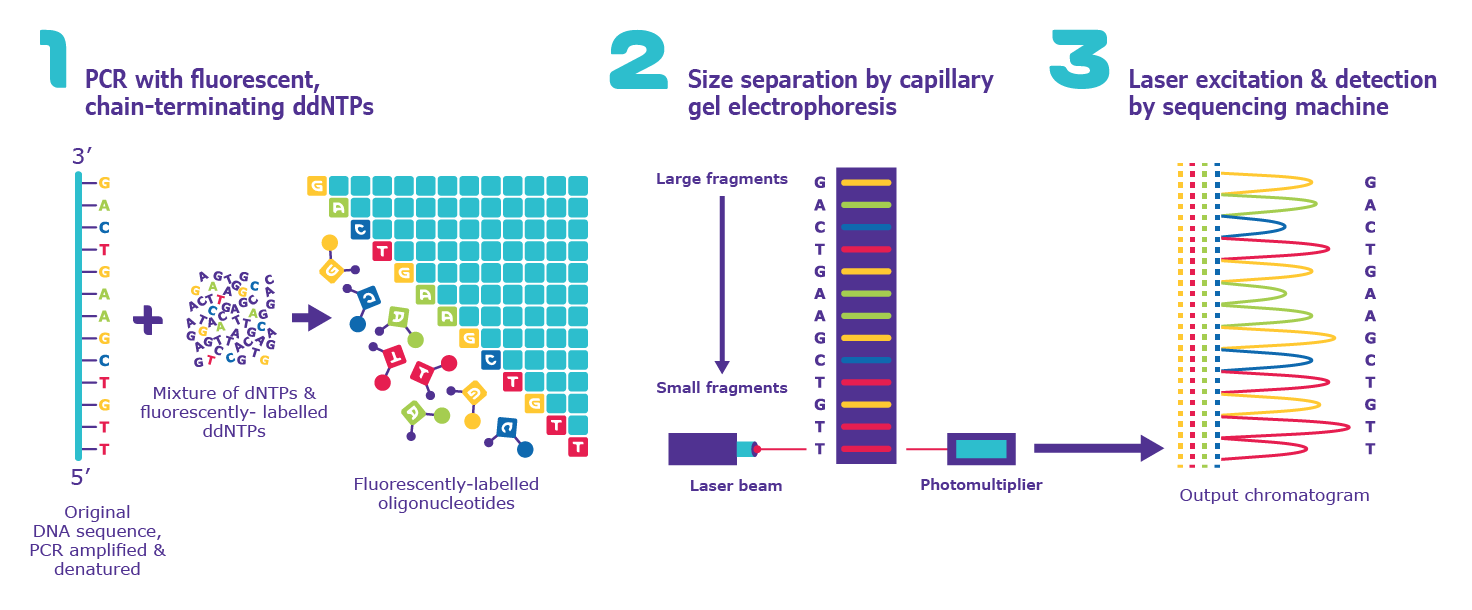
Extra - What is horizontal gene transfer?
What is horizontal transfer?
Horizontal gene transfer is the movement of genetic material between organisms without reproduction. It is common in bacteria and can occur through transformation, transduction, or conjugation.
How does horizontal transfer increase variation?
By allowing organisms (especially bacteria) to exchange DNA, horizontal transfer introduces new genes into a population, increasing genetic diversity. This can lead to traits like antibiotic resistance spreading rapidly.
What is transformation?
Transformation is when bacteria take in free DNA from their environment, often from dead bacteria, and incorporate it into their genome.
What is transduction?
Transduction is when viruses (bacteriophages) accidentally transfer genetic material from one bacterium to another during infection.
What is conjugation?
Conjugation is a process where one bacterium transfers genetic material (usually a plasmid) to another through a direct connection called a pilus.
What is transposition?
Transposition is when segments of DNA, called transposons or “jumping genes,” move from one part of the genome to another, potentially altering gene function.
How do viruses recombine genetic information?
Viruses can mix their genetic material when two different viruses infect the same cell. This process, called genetic reassortment, can create new viral strains (e.g., flu virus mutations).
